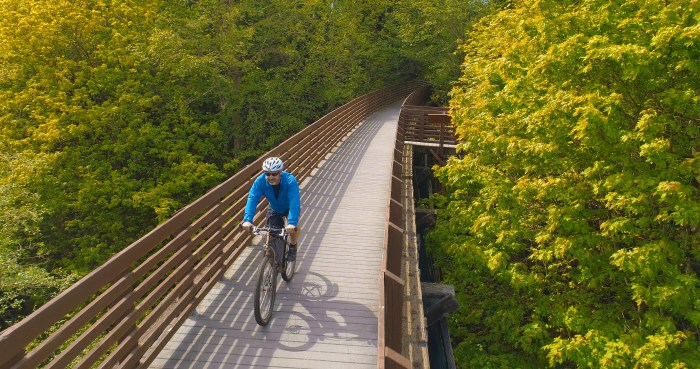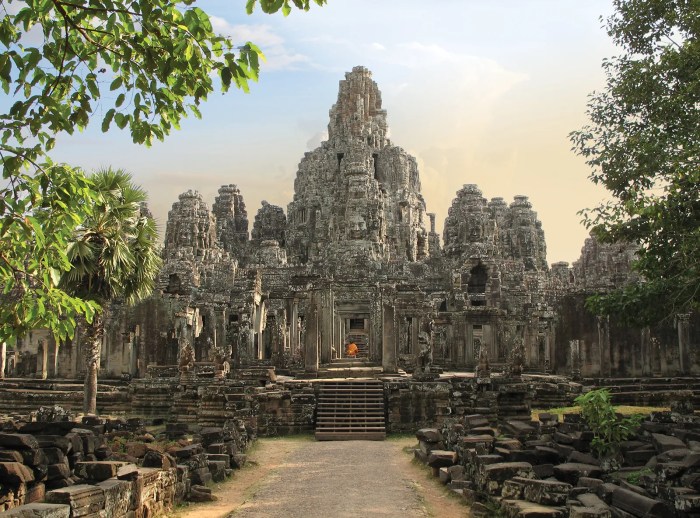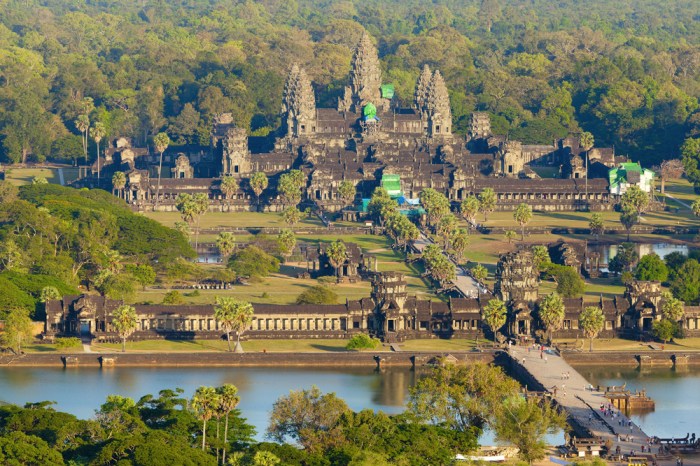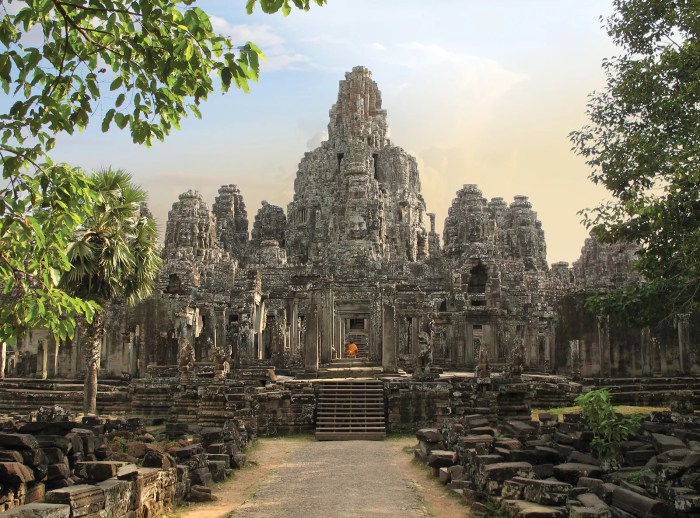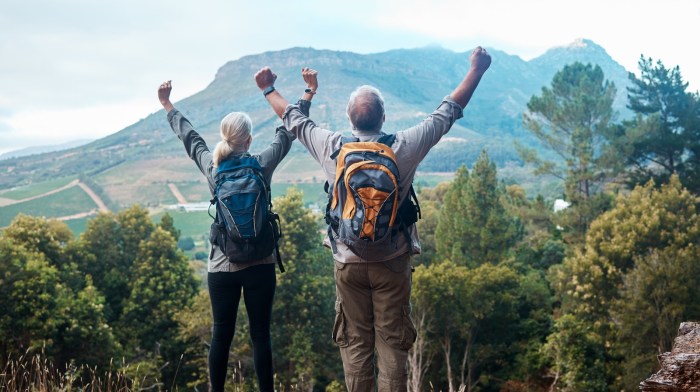Ultimate Weekend Olympic Peninsula: Discover the breathtaking beauty and diverse experiences of the Olympic Peninsula, a natural wonderland teeming with outdoor adventures. From pristine beaches to towering mountains, this rugged coastline offers unforgettable weekend getaways. This guide will help you plan the perfect trip, whether you crave adventure, relaxation, or a deep connection with nature.
This comprehensive guide will cover everything you need to know for a memorable trip. We’ll delve into the region’s unique features, highlight exciting activities, and provide practical information on itineraries, accommodations, food, and wildlife viewing.
Introduction to the Olympic Peninsula: Ultimate Weekend Olympic Peninsula
The Olympic Peninsula, nestled in the northwestern corner of Washington State, is a breathtaking tapestry of towering rainforests, rugged coastlines, and pristine wilderness. This unique region boasts a remarkable diversity of ecosystems, from the lush temperate rainforests clinging to the mountainsides to the dramatic sea cliffs that plunge into the Pacific Ocean. Its dramatic landscapes offer unparalleled opportunities for outdoor adventures and a profound connection with nature.The region’s history is deeply intertwined with the indigenous tribes, who have resided here for millennia.
The Quileute, Hoh, Quinault, and other tribes hold a profound connection to the land, with their cultures reflecting the unique environment and resources. European settlement brought new perspectives and activities, but the fundamental beauty and importance of the land remain central to the region’s character.
Outdoor Activities
The Olympic Peninsula provides a diverse range of outdoor activities, catering to various interests and skill levels. From challenging hikes through ancient forests to serene explorations of secluded beaches, the region offers something for everyone. Kayaking and canoeing are popular choices, allowing visitors to explore the coastline and inlets. Fishing opportunities abound, attracting anglers from across the nation.
Wildlife viewing is another significant draw, with chances to observe diverse species, including bears, elk, and numerous bird species.
Key Attractions by Activity Type
| Activity Type | Attraction | Description |
|---|---|---|
| Hiking | Hurricane Ridge | Offers panoramic views of the Olympic Mountains and surrounding valleys. Various trails cater to different experience levels. |
| Hiking | Sol Duc Hot Springs | The hot springs are nestled within a scenic valley. Hiking trails lead to the springs and surrounding forests. |
| Wildlife Viewing | Quinault Rain Forest | Home to a variety of wildlife, including Roosevelt elk, black bears, and numerous bird species. |
| Wildlife Viewing | Lake Quinault | A beautiful lake with opportunities to spot wildlife, especially birds. Boat tours are available. |
| Beaches | Ruby Beach | A stunning beach known for its dramatic sea stacks and powerful waves. Perfect for scenic walks and photography. |
| Beaches | La Push | A charming coastal town with a historic lighthouse. The beaches are known for their rugged beauty. |
| Kayaking/Canoeing | Lake Crescent | Offers serene paddling opportunities amidst the stunning surroundings. The lake is known for its calm waters. |
| Kayaking/Canoeing | Hoh Rainforest | Allows exploration of the intricate waterways within the rainforest. Experience the tranquility and biodiversity of the area. |
| Fishing | Quinault River | Offers opportunities for fishing in a scenic and tranquil setting. Variety of fish species are found here. |
| Fishing | Lake Quinault | Fishing for various fish species. Boat fishing and shore fishing options are available. |
Weekend Itinerary Ideas
The Olympic Peninsula, a breathtaking expanse of wilderness and coastal beauty, offers a plethora of experiences for every type of traveler. Whether you crave adrenaline-pumping adventures or peaceful moments in nature, this region has something to captivate you. This section presents three distinct weekend itinerary options to help you plan your unforgettable trip.
Adventure Weekend
This itinerary focuses on outdoor activities and exploration, perfect for those seeking thrills and challenges. It blends hiking, kayaking, and wildlife viewing, offering a taste of the rugged beauty of the Olympic Peninsula.
| Date | Time | Activity | Location | Estimated Duration |
|---|---|---|---|---|
| Friday | 2:00 PM | Arrival and check-in at a cabin near Lake Quinault | Lake Quinault area | 1 hour |
| Friday | 3:00 PM | Afternoon hike to a scenic overlook | Hurricane Ridge | 3 hours |
| Friday | 6:00 PM | Dinner at a local restaurant | Lake Quinault area | 1 hour |
| Saturday | 9:00 AM | Kayaking tour on Lake Quinault | Lake Quinault | 3 hours |
| Saturday | 12:00 PM | Lunch at a picnic spot along the lake | Lake Quinault | 1 hour |
| Saturday | 1:00 PM | Wildlife viewing hike (potential for spotting elk, deer, or bear) | Quinault Rainforest | 2 hours |
| Saturday | 4:00 PM | Relaxation at the cabin or a local spa (optional) | Lake Quinault area | 2-4 hours |
| Sunday | 9:00 AM | Breakfast at the cabin | Lake Quinault area | 1 hour |
| Sunday | 10:00 AM | Drive back to the ferry terminal | Lake Quinault area | 1 hour |
| Sunday | 11:00 AM | Departure | Ferry Terminal | N/A |
Relaxation Weekend
This itinerary prioritizes tranquility and relaxation, focusing on the natural beauty of the Olympic Peninsula. It features scenic drives, quiet walks, and opportunities to unwind and connect with nature.
| Date | Time | Activity | Location | Estimated Duration |
|---|---|---|---|---|
| Friday | 2:00 PM | Arrival and check-in at a coastal lodge | Hoh Rainforest area | 1 hour |
| Friday | 3:00 PM | Relaxing walk along the coast | Hoh Rainforest area | 2 hours |
| Friday | 5:00 PM | Dinner at the lodge or a nearby restaurant | Hoh Rainforest area | 1 hour |
| Saturday | 9:00 AM | Scenic drive along the Pacific Coast Highway | Pacific Coast Highway | 4 hours |
| Saturday | 1:00 PM | Lunch at a coastal cafe | Coastal Cafe | 1 hour |
| Saturday | 2:00 PM | Afternoon relaxation at the lodge or exploring the local shops | Hoh Rainforest area | 3 hours |
| Sunday | 9:00 AM | Breakfast at the lodge | Hoh Rainforest area | 1 hour |
| Sunday | 10:00 AM | Drive back to the ferry terminal | Hoh Rainforest area | 1 hour |
| Sunday | 11:00 AM | Departure | Ferry Terminal | N/A |
Nature Exploration Weekend
This itinerary is designed for nature lovers and enthusiasts who seek to immerse themselves in the unique ecosystems of the Olympic Peninsula. It features a blend of hiking, wildlife viewing, and exploration of the various plant and animal species.
| Date | Time | Activity | Location | Estimated Duration |
|---|---|---|---|---|
| Friday | 2:00 PM | Arrival and check-in at a lodge near Lake Crescent | Lake Crescent area | 1 hour |
| Friday | 3:00 PM | Easy hike around the lake | Lake Crescent | 2 hours |
| Friday | 5:00 PM | Dinner at a lakeside restaurant | Lake Crescent area | 1 hour |
| Saturday | 9:00 AM | Guided nature walk through a rainforest | Hoh Rainforest | 3 hours |
| Saturday | 12:00 PM | Picnic lunch at a scenic spot in the rainforest | Hoh Rainforest | 1 hour |
| Saturday | 1:00 PM | Visit to a local botanical garden | Botanical garden | 2 hours |
| Saturday | 4:00 PM | Relaxation and contemplation in a quiet area | Lake Crescent | 2 hours |
| Sunday | 9:00 AM | Breakfast at the lodge | Lake Crescent area | 1 hour |
| Sunday | 10:00 AM | Drive back to the ferry terminal | Lake Crescent area | 1 hour |
| Sunday | 11:00 AM | Departure | Ferry Terminal | N/A |
Accommodation Options
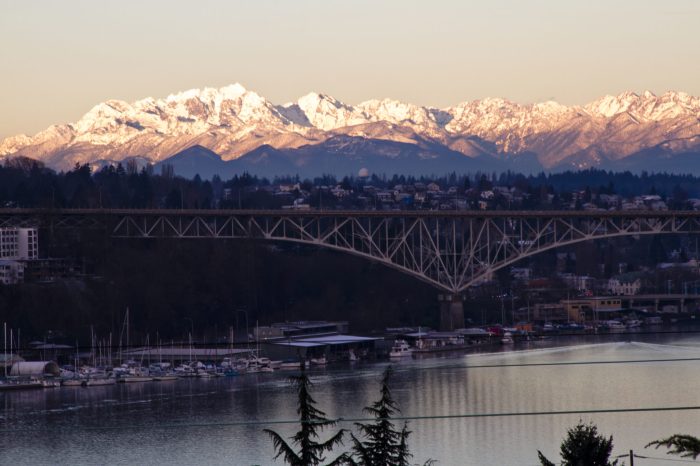
Finding the perfect place to rest your head after a day exploring the Olympic Peninsula is key to a memorable trip. The region offers a diverse range of accommodations, catering to various budgets and preferences, from cozy cabins to luxurious hotels and rustic campsites. Understanding the different options and their amenities will help you choose the ideal spot for your weekend getaway.
Hotel Accommodations
Hotels provide a comfortable and convenient base for exploring the area. They often include amenities like restaurants, pools, and fitness centers, which can enhance your overall experience. Hotels are a popular choice for travelers who want a hassle-free stay with access to a variety of services. They typically offer larger rooms with more amenities, making them a good option for families or those traveling with multiple people.
- Amenities: Amenities in hotels vary, but common features include swimming pools, restaurants, fitness centers, and business centers. Some hotels also offer concierge services, which can assist with arranging tours or activities.
- Popular Hotels: The Quinault Rain Forest Lodge, located near the Quinault Rain Forest, offers stunning views and a cozy atmosphere. Pricing typically ranges from $150 to $350 per night, depending on the season and room type. The Olympic National Park Lodge, situated near the park’s entrance, provides easy access to trails and attractions. Expect to pay around $200 to $400 per night for a standard room.
Cabin Rentals
Cabin rentals provide a more secluded and rustic experience. They often offer a more personalized stay, complete with kitchenettes or fully equipped kitchens, allowing for greater flexibility in meal preparation. The proximity to nature and the ability to prepare meals adds a unique charm.
- Amenities: Cabins vary significantly in amenities, but common features include kitchens, fireplaces, and outdoor spaces like decks or patios. Some cabins may also include hot tubs or other unique features. Many are located in more remote areas, offering a tranquil escape from the hustle and bustle of city life.
- Examples: Cozy cabins in Forks, near the Hoh Rainforest, typically cost between $100 and $250 per night, depending on size and amenities. Many options in the Lake Quinault area range from $150 to $300 per night, often including stunning lake views and access to hiking trails.
Campgrounds
Campgrounds offer a budget-friendly and adventurous option for nature enthusiasts. They provide a close connection to the natural beauty of the Olympic Peninsula. The experience often involves a greater level of self-sufficiency, but also allows for a deeper connection with the outdoors.
- Amenities: Campgrounds offer a variety of amenities, including restrooms, showers, and picnic tables. Many campgrounds have fire pits for cooking and socializing. Some also offer access to hiking trails and other outdoor activities.
- Popular Campgrounds: Lake Quinault Campground provides access to stunning lake views and hiking opportunities. Expect to pay around $30 to $50 per night, per campsite, with potential for reservations during peak season. Hoh Rainforest Campground offers a chance to experience the lush rainforest. Pricing is typically similar to Lake Quinault.
Accommodation Comparison Table
| Accommodation Type | Price (Approximate) | Amenities | Proximity to Attractions |
|---|---|---|---|
| Hotels | $150-$400+ | Restaurants, pools, fitness centers, concierge services | Usually near town centers or major attractions |
| Cabins | $100-$300+ | Kitchens, fireplaces, outdoor spaces | Varying, some are more remote |
| Campgrounds | $30-$50+ | Restrooms, showers, picnic tables, fire pits | Often located within or near parks and natural areas |
Food and Drink Experiences
The Olympic Peninsula offers a delightful culinary journey, blending fresh, local ingredients with a touch of Pacific Northwest charm. From farm-to-table restaurants to casual seafood shacks, the region’s diverse food scene caters to all tastes and budgets. The abundance of local produce and seafood creates a unique opportunity to savor the freshest flavors.The culinary scene in the Olympic Peninsula is a reflection of the region’s natural bounty.
The proximity to the ocean and the fertile farmland results in a vibrant selection of locally sourced ingredients, highlighting the unique flavors of the Pacific Northwest. Restaurants and food vendors often feature menus showcasing these ingredients, creating an authentic dining experience.
Local Restaurants and Food Vendors
The Olympic Peninsula boasts a collection of local restaurants and food vendors that are committed to using fresh, locally sourced ingredients. These establishments often highlight the region’s unique flavors and showcase the bounty of the area. Many cater to a variety of tastes and preferences, from casual diners to those seeking a more upscale dining experience.
Types of Cuisine
The region offers a range of culinary styles. Seafood is naturally prominent, with numerous restaurants specializing in fresh catches of the day. Expect to find delicious salmon, halibut, and Dungeness crab dishes. Additionally, farm-to-table dining experiences are prevalent, highlighting seasonal vegetables, fruits, and herbs from local farms. These dishes are often paired with locally brewed craft beers, providing a complete sensory experience.
Local Produce and Seafood
The Olympic Peninsula’s fertile lands and abundant waters provide an excellent foundation for a rich culinary tradition. Local farms produce a variety of fresh fruits and vegetables, often showcased in farm-to-table restaurants and farmers markets. The region’s abundant seafood is a major component of the culinary scene, offering a wide array of fresh catches. From the Pacific Ocean’s bounty to the local farms, the region’s culinary scene emphasizes the use of locally sourced ingredients.
Dining Atmosphere and Ambiance
The atmosphere in the local dining establishments varies. Casual seafood shacks often offer a relaxed and lively environment, perfect for enjoying fresh seafood with a friendly atmosphere. Many restaurants with a more refined ambiance provide a quieter and more sophisticated setting, suitable for special occasions or a more leisurely meal. The overall experience is a reflection of the region’s natural beauty and the warmth of its hospitality.
Planning an ultimate weekend trip to the Olympic Peninsula? Before you go, you’ll want to check the current COVID-19 testing requirements in New York, as you might need a negative test result to return to the area. Fortunately, finding reliable new york covid testing options is usually straightforward. Once you’ve got that sorted, you can fully immerse yourself in the stunning natural beauty of the Olympic Peninsula, from hiking to wildlife spotting, making your weekend unforgettable.
Restaurant Listings
| Restaurant Name | Specialties | Average Price Range |
|---|---|---|
| The Salty Siren | Fresh seafood, Pacific Northwest cuisine | $$ |
| The Farmer’s Daughter | Farm-to-table, seasonal dishes | $$ |
| Neptune’s Net | Seafood platters, casual dining | $ |
| The Cozy Cabin | Hearty soups, sandwiches, local brews | $ |
Note: $ = Under $25, $$ = $25-$50, $$$ = Over $50. Price ranges are estimates and may vary based on specific menu items and promotions.
Outdoor Activities and Experiences
The Olympic Peninsula boasts an incredible array of outdoor adventures, catering to every skill level and interest. From challenging hikes to serene beach walks and thrilling wildlife encounters, there’s something for everyone. This section delves into the diverse outdoor activities available, offering insights into the necessary gear, ideal times of year, and the unforgettable experiences they provide.Exploring the Olympic Peninsula’s wilderness is a journey into a realm of natural beauty and abundant wildlife.
Planning the ultimate weekend on the Olympic Peninsula is always exciting! But sometimes, getting there involves a pit stop. If you’re flying into a nearby airport, consider the amenities at a ski lodge airport lounge like ski lodge airport lounge white plains for a comfortable and convenient pre-trip relaxation. The scenic drive back to the Olympic Peninsula will be all the more enjoyable after a well-deserved break.
Each activity offers a unique perspective on the region’s splendor, whether you’re seeking a strenuous climb, a relaxing beach stroll, or a chance to spot a majestic elk. This section will Artikel the essential details for planning your outdoor excursions.
Hiking
Hiking trails throughout the Olympic Peninsula offer breathtaking vistas and opportunities to connect with nature. From gentle strolls to challenging climbs, there’s a trail for every hiker. The trails vary significantly in difficulty, length, and scenic beauty, requiring different levels of preparation.
- Easy to Moderate Hikes: These trails are perfect for families and beginners, offering a chance to experience the region’s natural beauty without demanding strenuous effort. Examples include the Quinault Rain Forest trails, which provide a glimpse into the lush, temperate rainforest ecosystem. Comfortable hiking shoes and layers of clothing are generally sufficient. These hikes are ideal during spring and fall when the weather is more moderate and the trails are less crowded.
- Challenging Hikes: These trails often involve steep ascents, rocky terrain, and longer distances, demanding greater physical stamina and appropriate gear. The trails on the Olympic Mountains offer stunning views of the surrounding peaks and valleys. Experienced hikers should prepare for varied weather conditions and carry essential gear, including sturdy hiking boots, waterproof jackets, and plenty of water.
Wildlife Viewing
The Olympic Peninsula is a haven for wildlife enthusiasts. Black bears, elk, deer, and various bird species thrive in the region’s diverse habitats. Observing these creatures in their natural environment is a unique and enriching experience.
- Best Times to Spot Wildlife: Early mornings and late afternoons are often the best times for wildlife viewing, as animals are more active during these periods. Be mindful of your surroundings and follow park guidelines to ensure your safety and the safety of the animals.
- Important Considerations: Maintain a safe distance from wildlife. Never approach or feed animals, and always carry bear spray and know how to use it if you are in an area where bears are known to frequent. Proper preparation and respect for the animals are paramount.
Beach Exploration
The Olympic Peninsula’s coastline boasts a variety of beaches, offering opportunities for relaxation, exploration, and wildlife viewing. From secluded coves to expansive stretches of sand, the beaches offer a diverse range of experiences.
- Beach Safety: Be aware of the tides and currents, as these can change quickly and unpredictably. Check weather forecasts before heading to the beach, and always be prepared for changing conditions. Bring appropriate footwear and clothing for potential weather changes. Pack sunscreen and sunglasses for protection from the sun.
Hiking Trail Comparison
| Trail Name | Length (miles) | Difficulty | Scenic Views |
|---|---|---|---|
| Hurricane Ridge Trail | 7.5 | Moderate | Panoramic views of the Olympic Mountains |
| Lake Quinault Trail | 3.5 | Easy | Tranquil lakeside views |
| Sol Duc Falls Trail | 4.0 | Easy | Picturesque waterfall and forest views |
Wildlife Viewing Opportunities
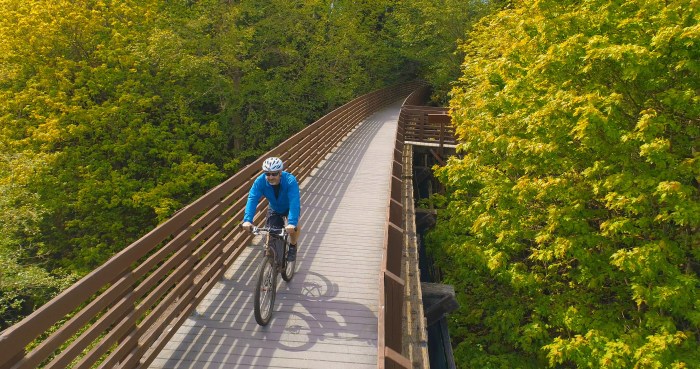
The Olympic Peninsula boasts an incredible array of wildlife, from majestic mammals to vibrant avian species. Exploring the region offers a unique opportunity to witness these creatures in their natural habitats, fostering a deeper appreciation for the diverse ecosystems of the peninsula. From the rugged coastlines to the towering rainforests, diverse animal populations thrive.Observing wildlife responsibly is crucial for ensuring their continued presence and for preserving the delicate balance of the ecosystem.
By adhering to established guidelines and respecting the animals’ space, visitors can enjoy these encounters without disturbing their natural behaviors.
Planning a weekend getaway to the Olympic Peninsula? It’s a stunning destination, but if you’re coming from the UK, be sure to check the latest rules regarding Italy vaccinated travelers, especially if you’re planning a trip there first. italy vaccinated travelers uk quarantine rules can be complex, so double-checking the requirements will ensure a smooth trip, and then you can fully immerse yourself in the beauty of the Olympic Peninsula’s stunning landscapes and natural wonders.
Common Wildlife Species
This section highlights the diverse wildlife species that call the Olympic Peninsula home, including their habitats and recommended viewing locations. The following table provides a glimpse into the abundant biodiversity of the area.
| Species | Habitat | Recommended Viewing Spots | Unique Characteristics |
|---|---|---|---|
| Black Bear | Forests, meadows, near water sources | Olympic National Park, Quinault Rain Forest, coastal areas | Omnivores, highly adaptable, can be shy but curious. Important to maintain a safe distance and never approach them. |
| Elk | Open meadows, forests | Olympic National Park, Quinault Rainforest, areas with clearings | Herbivores, large in size, often seen in herds. Keep a safe distance and avoid sudden movements. |
| Deer | Forests, meadows, riparian areas | Olympic National Park, Quinault Rainforest, coastal areas | Herbivores, more elusive than elk, often seen alone or in small groups. Respect their space and avoid approaching. |
| River Otters | Streams, rivers, lakes | Quinault River, Hoh River, Lake Quinault | Semi-aquatic, playful, often seen in family groups. Observe from a distance and avoid disturbing their activities. |
| Salmon | Rivers, streams, estuaries | Quinault River, Hoh River, coastal rivers | Anadromous fish, crucial part of the ecosystem, migrating from the ocean to spawn in freshwater. Observe from designated viewing points. |
| Bald Eagles | Coastal areas, near water bodies | Coastal areas of the Olympic Peninsula, beaches, and estuaries | Large raptors, iconic symbol of the area, often seen soaring above the landscape. Observe from a distance and avoid disturbing their hunting. |
Responsible Wildlife Viewing Practices
Understanding and practicing responsible wildlife viewing is paramount to preserving the natural beauty and wildlife of the Olympic Peninsula. The following points Artikel essential considerations.
- Maintain a safe distance from all wildlife. Never approach or feed wild animals.
- Observe from designated viewing areas, if available. Respect the animals’ natural behaviors and avoid interfering.
- Minimize noise and movement to avoid startling or disturbing wildlife. Avoid sudden movements or loud noises.
- Carry bear spray if hiking in bear country and know how to use it effectively. Learn about bear safety protocols and practice appropriate precautions.
- Dispose of trash properly to prevent attracting wildlife. Pack out all trash and follow Leave No Trace principles.
- Be mindful of your surroundings and anticipate the presence of wildlife. Be observant of the area and be aware of your surroundings.
Unique Characteristics of Olympic Peninsula Wildlife
The diverse ecosystems of the Olympic Peninsula support a unique array of wildlife species, each with its own distinct characteristics.
- Black Bears: Their omnivorous diet allows them to adapt to various environments. They are often active at dawn and dusk, and play a crucial role in seed dispersal and nutrient cycling.
- Elk: Their large size and social behavior make them impressive to observe. They are essential components of the forest ecosystem, influencing vegetation patterns and providing food for predators.
- Bald Eagles: Their powerful flight and keen eyesight make them excellent hunters. They are top predators and contribute to the health of the ecosystem.
Things to Consider for a Weekend Trip
Planning a weekend getaway to the Olympic Peninsula requires careful consideration of the region’s unique characteristics. From the unpredictable weather patterns to the necessary permits for certain activities, understanding these factors ensures a smoother and more enjoyable experience. This section dives into crucial elements to help you plan your trip effectively.The Olympic Peninsula, renowned for its breathtaking scenery and diverse wildlife, offers a wide range of outdoor activities.
However, preparing for the elements, obtaining necessary permits, and packing strategically are key to making the most of your time.
Potential Weather Conditions and Clothing
The Olympic Peninsula experiences a wide range of weather conditions, from sunny days to sudden downpours and even snow at higher elevations, especially during the shoulder seasons. Be prepared for varying temperatures, including cool evenings and potentially chilly mornings. Pack layers of clothing, including waterproof and windproof outerwear, a warm fleece jacket, and comfortable hiking pants or shorts.
A hat, gloves, and sturdy hiking boots are also highly recommended. Check the forecast before you go, as conditions can change rapidly. Be prepared for fog, particularly in coastal areas.
Necessary Permits or Reservations, Ultimate weekend olympic peninsula
Some activities on the Olympic Peninsula require permits or reservations. For example, camping in designated areas often requires reservations in advance, particularly during peak season. Certain hiking trails or wildlife viewing spots might have entry restrictions or require permits. Research the specific activities you plan to engage in and obtain any necessary permits or reservations well in advance.
Packing and Planning for a Smooth Trip
Effective packing and planning are crucial for a smooth weekend trip. Create a detailed packing list, considering the potential weather conditions, activities you’ll be participating in, and the length of your stay. Choose lightweight, quick-drying clothing and pack appropriate gear for any planned outdoor activities. Make sure to have a map and compass or GPS device if you’ll be hiking or exploring off-trail.
Having a fully charged phone with a portable charger is also recommended, as cell service can be spotty in certain areas. Plan your routes and destinations in advance, and ensure you have adequate transportation to reach your desired locations.
Essential Packing Items for a Weekend Trip
| Activity | Essential Items |
|---|---|
| Hiking | Hiking boots, water bottles, snacks, first-aid kit, sunscreen, insect repellent, map/compass/GPS, layers of clothing |
| Camping | Tent, sleeping bag, sleeping pad, cooking equipment, utensils, food, water, bear canister (if necessary), first-aid kit, headlamp/flashlight, trash bags |
| Wildlife Viewing | Binoculars, spotting scope (optional), camera, comfortable shoes, insect repellent, sunscreen, water |
| Fishing | Fishing license (if required), fishing gear, tackle box, sunscreen, insect repellent, water, snacks, rain gear |
| Beach Activities | Sunscreen, sunglasses, hat, towel, beach umbrella, water shoes, swimwear, water bottles |
Illustrative Images of the Olympic Peninsula
The Olympic Peninsula, a wild and breathtaking landscape, begs to be captured in images. From the emerald green forests to the rugged, dramatic coastline, the peninsula offers a stunning visual feast. These images, if seen, would evoke a powerful sense of awe and inspire a desire to explore this natural wonderland.These images offer more than just pretty pictures; they’re portals to experiences.
They invite us to imagine the crisp air on a hiking trail, the salty spray on a rugged beach, and the vibrant hues of wildflowers bursting forth in the meadows. They reveal the beauty of the untouched wilderness and the importance of preserving its pristine condition for future generations.
Hiking Trails
Hiking trails in the Olympic Peninsula are more than just paths; they’re gateways to unique ecosystems. Imagine a trail winding through a dense forest, sunlight filtering through the canopy, creating an ethereal ambiance. The air, thick with the scent of pine and damp earth, carries the whispers of unseen wildlife. You might encounter moss-covered boulders, ancient trees, and glimpses of waterfalls cascading down mossy slopes.
The feeling is one of profound tranquility, a moment of connection with nature’s raw beauty.
Coastal Scenery
The Olympic Peninsula’s coastline is a symphony of rugged beauty. Imagine a powerful ocean crashing against jagged cliffs, creating a dramatic display of whitecaps and spray. The wind whips through the exposed rocks, while seabirds wheel and cry overhead. The stark beauty of the basalt cliffs, the wild, untamed beauty of the beaches, and the spray-painted rocks, all contribute to a profound and awe-inspiring atmosphere.
The vastness of the ocean and the closeness of the mountains create a unique landscape that demands respect and appreciation.
Forest Landscapes
The forests of the Olympic Peninsula are a realm of emerald green and towering trees. Picture towering trees, their branches intertwined, forming a dense canopy that filters sunlight into dappled patterns on the forest floor. Sunlight filters through the dense canopy, illuminating the forest floor in a mosaic of light and shadow. The air is crisp and cool, carrying the scent of damp earth and decaying leaves.
The forest floor, carpeted with fallen needles and decaying leaves, provides a habitat for a rich diversity of plants and animals. This intricate ecosystem is a testament to the power of nature’s artistry.
Wildflower Meadows
Imagine vibrant meadows bursting with wildflowers in a kaleidoscope of colors. The bright hues of wildflowers, a riot of reds, purples, yellows, and whites, carpet the ground, creating a scene of joyful abundance. The air is filled with the sweet fragrance of wildflowers, buzzing with bees and butterflies. The sunlight dances on the petals, creating a dazzling display of nature’s artistry.
The juxtaposition of the wildflowers with the towering evergreen forests creates a scene of remarkable beauty.
Wildlife Viewing Opportunities
The Olympic Peninsula is a haven for wildlife, offering a multitude of opportunities to observe these creatures in their natural habitat. Imagine the majestic beauty of a black bear foraging in a lush forest, or the graceful movements of a bald eagle soaring above the towering trees. Sightings of these magnificent creatures are moments of wonder, reminders of the rich biodiversity of the region.
Observing these animals in their natural surroundings is a privilege and a chance to appreciate the delicate balance of nature.
Closing Notes
In conclusion, the Olympic Peninsula offers a plethora of experiences for every kind of traveler. Whether you’re seeking thrilling hikes, tranquil beach walks, or close encounters with wildlife, a weekend escape to this remarkable region promises an unforgettable adventure. We hope this guide has provided you with the tools to craft the perfect Olympic Peninsula weekend getaway.
